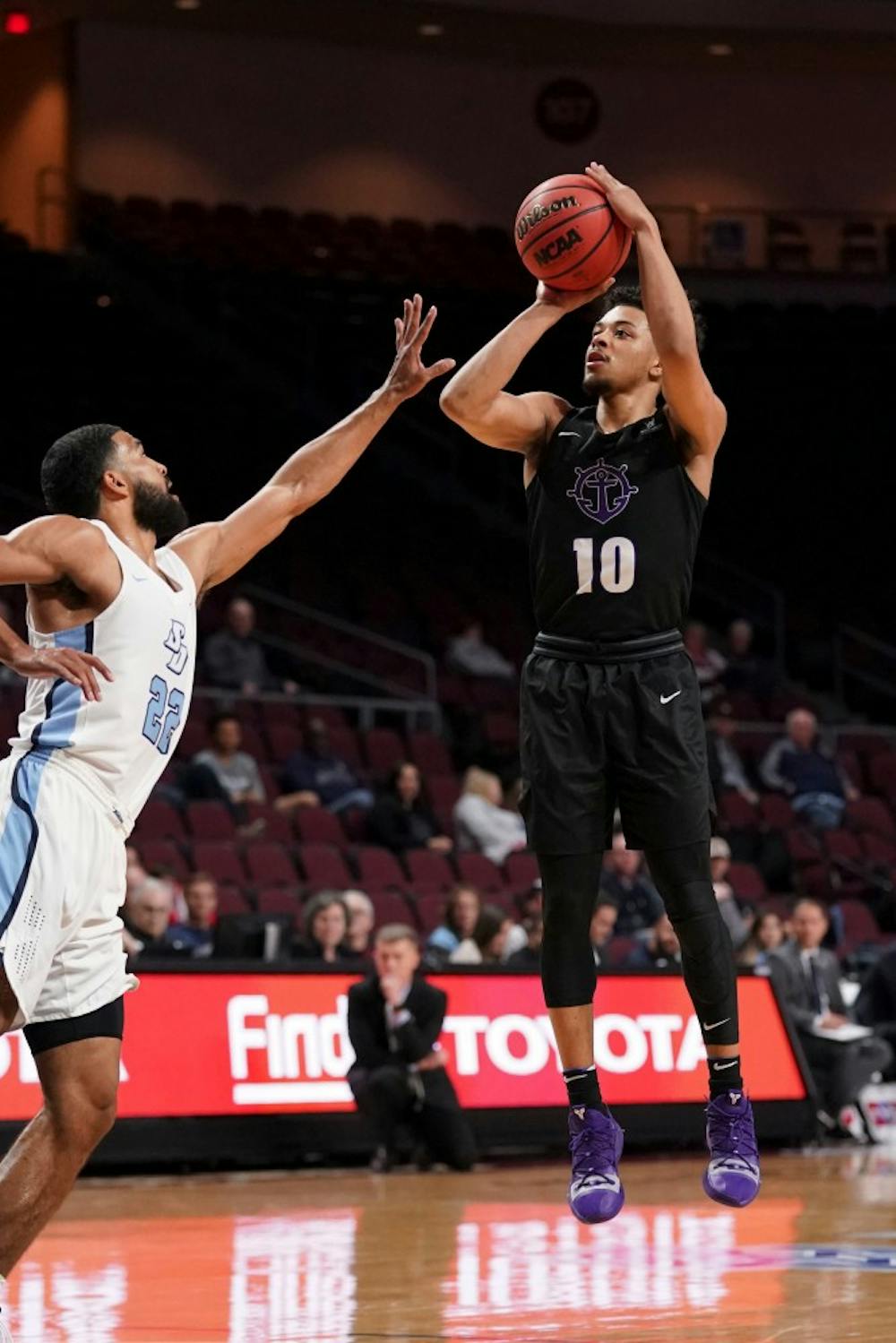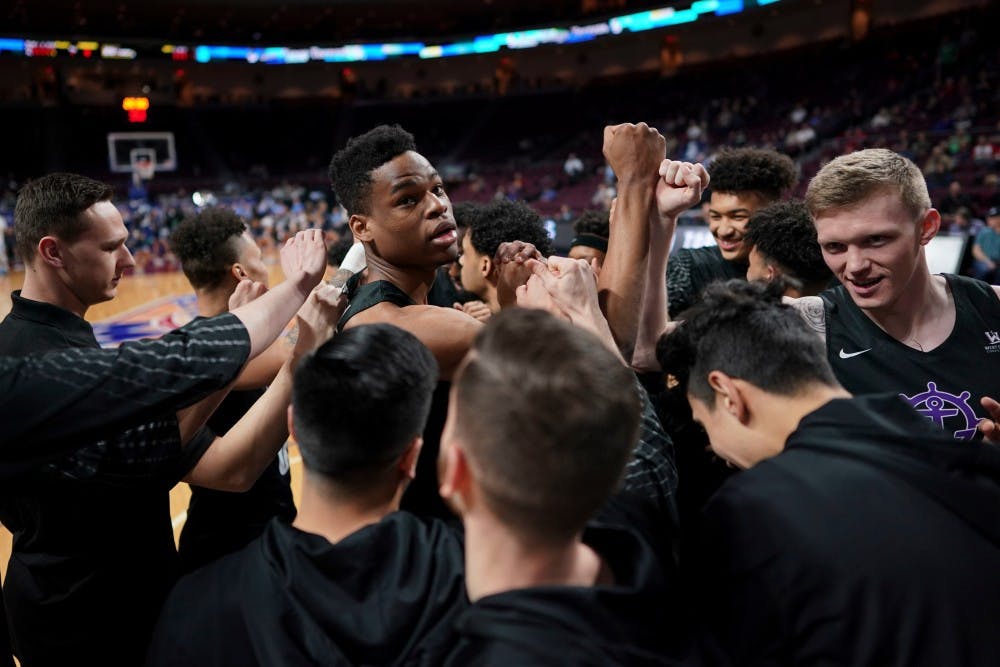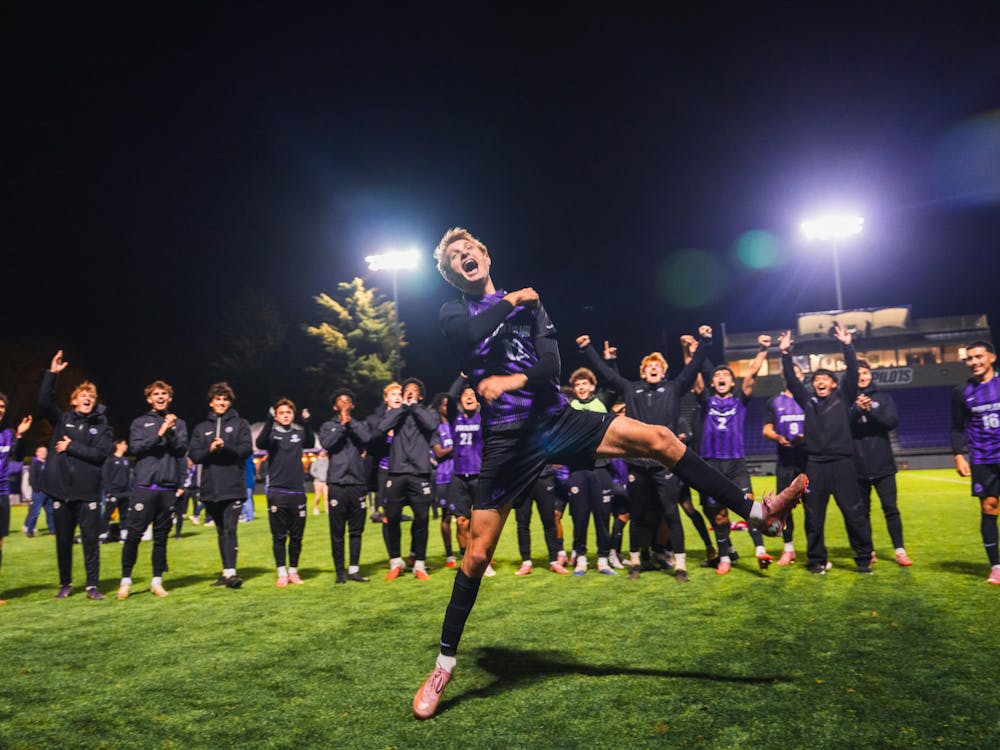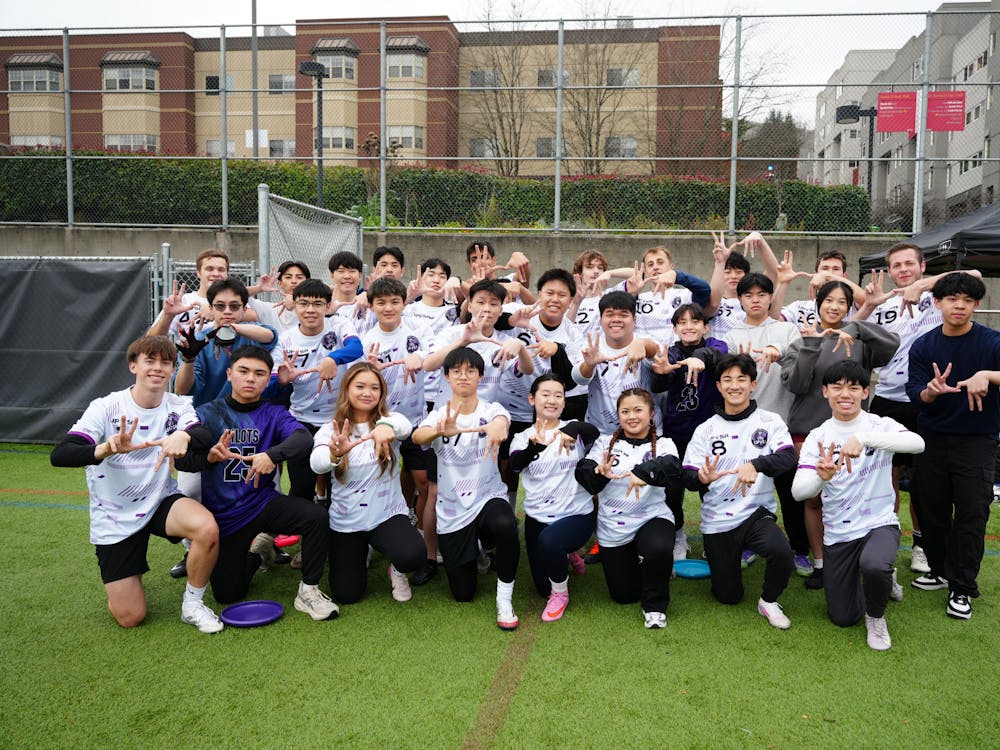Last Thursday, the Portland Pilots’ men’s basketball season ended in an all to familiar fashion: a blowout 67-47 loss to the University of San Diego Toreros.
In a year where the hope was that Terry Porter’s young Portland squad could improve upon last year’s also disappointing season, the team instead finished on an 18-game losing streak to go 7-25 overall and 0-17 in conference play, if you count the WCC tournament. That’s three games worse than last year’s 10-22 record.
Let’s take a look at what worked and what didn’t for the Pilots this season.
What went wrong
The reality is that this was a bad season — one of the worst in recent history.
Expectations were higher going into this season. It was Porter’s third year in charge and his chance to make some progress. Sophomore and All-WCC honorable mention honoree Marcus Shaver Jr. even predicted a top-5 finish in the WCC this season. Instead, it was the worst season for the Pilots since the 2011-12 season, when they went 7-24. They’re ranked 326th out of 353 teams in both the NET and KenPom rankings.
The 0-17 mark in conference play marks the first time since 2012 that a WCC team has gone winless against WCC opponents. Every other team had at least four conference wins.
The Pilots finished their season last in the conference in almost every single statistical category. They finished last in scoring margin at -9.6 (the closest team to them was Pacific at -3.6). They were also last in scoring offense (64.7), field goal percentage (41.4 percent) and rebounding margin (-5.2). The only categories where they didn’t sit in the bottom three of the league were defensive rebounding and blocked shots.

Sophomore guard Marcus Shaver Jr. rises up for a jump shot. Courtesy of UP Athletics.
The team posted an offensive rating of 94.2 and a defensive rating of 108.2, good for 328th and 313th in the nation, respectively. The only team giving up more points per game than the Pilots this season in the WCC was BYU, but BYU could make up for any points allowed on defense with their usually stellar offense. Plus, BYU’s defensive efficiency was almost six points better at 102.5.
You could throw a number of stats that show how much the team struggled against opponents in general, but just watching them showed how the team failed to get things going on either end of the floor.
The offense often stalled because of an inability to adequately get players open for shots. Porter and the Pilots would run a dribble-weave play often as well as a basic motion offense that looked like ball movement that could best be described as lackadaisical. The plays would take off a significant chunk of time on the shot clock and the result would often be a panicked shot from either Walker or Shaver Jr., whether it be a contested layup or a fadeaway falling three (which Walker and Shaver Jr. are still pretty good at).
Before the season, The Beacon spoke with multiple players and coach Ben Johnson about how the team was looking to push the ball more and shoot from outside, evolving with the modern offenses prevalent throughout the NBA and other parts of college basketball.
The offense didn’t exactly help the Pilots reach those goals. In terms of pushing the pace, the Pilots only averaged 69.7 possessions per game. That’s 247th in the nation. Last year’s was 69.6. That doesn’t translate into early points.
Three-point shooting didn’t improve either. For starters, they shot around the same amount of threes as last season (664 this season compared to 665 last season). Even though they shot a similar number of attempts, their overall percentage went down from 38.3 percent to 32.5.
It’s not like the Pilots lack shooters. Redshirt junior Josh McSwiggan posted a 43.5 percent shooting clip from three last season, and sophomores Jacob Tryon and JoJo Walker are both quality shooters, too. However, the offensive problems made getting quality shots from outside difficult. Walker often had to hoist up a last second three or McSwiggan had to try and bail Portland out with a contested corner shot far too often. The offense was so stagnant that these were generally the only options for them.
What went well
The positives of the season aren’t really focused on how good they were as much as they are about how it could have been worse.
Let’s start with the conference itself. The West Coast Conference was stronger than it has been in a long time. Gonzaga was impressive, even by their own standards, and the Bulldogs are arguably the best team in the nation. The NET rankings have them at No. 1 and KenPom has them at No. 2, and they are essentially a lock in most bracketologists’ eyes for the one seed in the NCAA tournament.

Portland Pilots guard Josh McSwiggan against the San Diego Toreros during the second half of the WCC Basketball Championships at Orleans Arena. Courtesy of UP Athletics.
It’s not just what Gonzaga has done that makes the WCC strong. The conference wanted to improve the quality of West Coast Conference basketball and implemented the Basketball Enhancement Plan for this season. The plan made several changes, including shortening the conference schedule to 16 games and giving the top two seeds in the tournament a bye straight to the semifinals.
So far the changes have been positive. The conference as a whole went 100-49 in non-conference games this season, the most wins outside of the WCC in conference history. Granted, they played more non-conference games this year, but it’s still an impressive mark that’s better than the record the Power 5 conference Pac-12 put up.
In fact, many would argue that the WCC has been better than the Pac-12 this season. The head-to-head record between the two conferences this season was 10-8 in the WCC’s favor. The WCC had two teams ranked in the top-40 in KenPom, with Gonzaga at No. 2 in the nation and Saint Mary’s at No. 34. The highest ranked Pac-12 team was Washington at 42nd.
The point is that the WCC is stronger than it has been in recent years, which is difficult when you’re a young team like Portland. It was an unusually stacked conference this season, with multiple teams vying for the second seed behind Gonzaga. Some even thought that San Francisco before their late season slide could overtake Gonzaga. That didn’t happen, but it shows how strong the conference was this season.
“You can see our league is so much stronger this year, top to bottom,” WCC Commissioner Gloria Nevarez said about the conference this season via Will Maupin of Mid-Major Madness. “Even for teams that have stubbed their toes, their net rankings haven’t dropped to the point where they’re preventing Gonzaga, deep into conference play, from obtaining the No. 1 NET ranking. And that’s the goal of a healthy conference.”
The conference was simply better this season. That doesn’t excuse the winless record, but it’s something.
Another “positive” for this season is that the team is young and still has room to improve. There are players that stand out, such as sophomore Marcus Shaver, who just earned All-WCC honorable mention honors for his play this season.
Other players show signs of promise too. Freshman Theo Akwuba at times was the best defensive player on the floor, consistently swatting any shot thrown in his general vicinity. Sophomores JoJo Walker and Tahirou Diabate showed in spurts how valuable they can be as scorers on the offensive end. Redshirt freshman Hugh Hogland also made huge strides this season, doing the dirty work that doesn’t always show up on the scoreboard.
They’re far from perfect, however. For every great moment Akwuba had he would have another poor play that would remind you that he’s still young and has work to do. Walker at times struggled to get going offensively while Diabate would get worked on the defensive end and get himself into foul trouble. Hogland is solid in the post but looks uncomfortable outside of it.
Andrew Nemec of the Oregonian mocked UP’s athletic office for boasting on their website about an obscure website called Hoop Scoop had ranked the 2017 recruiting class, who takes up most of the roster, as 10th in the nation. For reference 247Sports had this class ranked 161st with the highest ranked recruit being Shaver Jr. as the 69th best point guard. While Hoop Scoop’s assessment was obviously inaccurate, this class was still one of the best UP has brought in and shows flashes of talent.

Sophomore forward Tahirou Diabate drives on a San Diego defender. Courtesy of UP Athletics.
At this point it’s a matter of whether they can bring it all together to put together at least a .500 season. Whether or not they will actually do that remains to be seen.
What this means for the future
While some of the blame surely falls on the players, many would say the majority falls squarely on the shoulders of Terry Porter.
The players are talented. Not top 10 in the nation talented, but at the very least WCC talented. A lot of the problems don’t stem from what they’re doing versus what Porter puts out there offensively and defensively.
It’s not promising that the team’s win total has declined every year of the Porter Era. Sure, they only won 11 games in the first year and only 10 in the second, so the bar is already set low, but getting only seven wins is inexcusable.
The team is young and talented, and they fought in a lot of games toward the end of the year, like a close overtime loss against San Francisco on Feb. 16. But still it ended in a loss, one where the deficiencies on both ends of the floor were prevalent despite the close score.
The WCC is getting tougher, but that doesn’t mean the team can’t improve. The continuity on the roster should have helped them more than it did. It wasn’t going to catapult them into the upper echelon of teams, but it also shouldn’t have resulted in a record that was three games worse than the prior year and a winless record in conference.
After a certain point the excuses run out and the results have to start being positive. As of right now, the results have been anything but. Next year, when the experience excuse no longer flies, Porter has to provide signs of life for this Pilot basketball program.
Kyle Garcia is the sports editor for The Beacon. He can be reached at garciaky20@up.edu.








